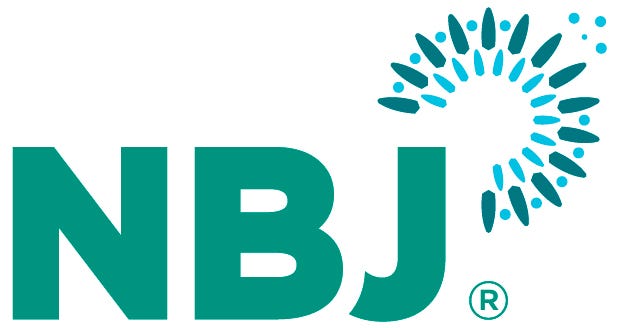
When America leads, the rest of the world often follows. Such is the case with cannabis, but now the country that bucked the culture wars to make medical marijuana legal on a state-by-state basis may be set to fall behind in the next, and most promising, step in health and wellness uses for the much-maligned plant.
The history of Americans’ relationship with cannabis is long and scandalous, but the events that set the stage for the current situation are relatively recent. When the Obama administration offered an official “hands-off” policy toward marijuana just three months into its first term in 2009, the green rush was on. Lost in the controversy, first about medical marijuana and then about recreational or adult use, were the secrets held in the cannabis plant derived from its non-psychoactive compounds. Chief among these was the cannabinoid called cannabidiol, or CBD. Unlike THC, its high-inducing cousin, CBD does not get users high yet still exerts many of the health-promoting properties of the plant. It may well turn out that the real medical marijuana is CBD derived from hemp oil, and not THC.
But now, with U.S. policy on CBD in limbo as national politics pivot away from what might be called a saner drug policy, Canadians, not Americans, may lead the charge for CBD. Our neighbor to the north is looking to go one step further than merely letting its provinces decide, similar to the state-by-state legal status in the United States. It’s being predicted that by July 2018—but maybe as early as the first of January—Canada will pass national legislation that legalizes the cannabis plant in every respect.
An entire nation with legal access could easily be set to outpace a country where the state-by-state hopscotch and the specter of federal interference keep the situation unsettled.
Although cannabis is not yet legalized in Canada, there is already an investment-friendly expectation that it will happen. Players in the greater cannabis space, which includes CBD as supplements, are already laying the groundwork.
“We’re building the capacity ahead of time in order to meet demand,” says Joseph Logan, CEO of Functional Remedies, a Colorado-based hemp outfit. “It’s a little bit like building tracks in front of the train, but we’ve built those tracks quite a bit down the line.”
This means everything from establishing relationships with potential growers and retailers to guessing what the final legislation might look like in order to position companies for maximum advantage.
One development that signals just how lucrative the cannabis space can be in Canada is Quebec nutritional ingredient supplier Neptune Wellness Solutions. The company was the pioneer of krill oil more than a decade ago, conducting the first three published studies showing how krill was unique and, in some ways, superior to run-of-the-mill omega-3 fish oil. Then Jim Hamilton took over as CEO in 2015. In the last two years, the company has repositioned itself completely, including selling off its krill production capacity to chief rival Aker BioMarine. The next pivot: preparing to cash in on the Canada cannabis market.
“It’s not a business we’re in right now, but it’s what we do. We’re in the business of extracting oils and putting them in deliverables,” Hamilton says. “The medical market today is estimated to be between $250 and $500 million. The medical business will be $1.5 billion in five years, but most of the development of that new business will be in extracted forms and softgels and consumables, and not by people smoking weed. We think that’s interesting.”
CBD is a notoriously large molecule that can be challenging for the body to absorb. Neptune, a technology innovator and oils expert with ingredients that help boost the bioavailability of other nutrients, is well positioned to help make the Canadian hemp business go pro quickly and efficiently. But “quick” is a relative term. The Natural and Non-prescription Health Products Directorate (NNHPD) regulatory filing alone for Neptune took months to prepare and came in at more than 1,000 pages, Hamilton says.
Another supplement company helping to advance the Canadian market with technology is Source One Global Partners. “Once the oils are extracted, there’s a real bioavailability challenge,” says President and CEO Jesse Lopez, describing his company’s patented emulsification process. “That’s where our technology really optimizes the therapeutic benefits of these cannabinoids in the body.”
The great green north
CBD and THC fit like a lock and key into existing receptor sites throughout the body. These receptors are part of the endocannabinoid system, so named after the cannabis plant that led to its discovery. The system governs physiology around a range of body processes, including the nervous system and digestive system, as well as other health aspects, including pain, appetite, sensation, inflammation, mood and stress.
U.S. hemp-based CBD product sales are estimated to exceed $700 million by 2020, with annual sales growth never dipping below 30 percent, according to Hemp Business Journal. About $150 million of that amount is estimated to come through the natural and specialty retail channel—about the same as direct sales channels like online sales. Fully 40 percent is estimated to come via the pharmaceutical channel, thanks to GW Pharmaceuticals, a British firm that has received FDA acknowledgment to study CBD as an Investigational New Drug. Its product is expected to become the go-to treatment for for certain child-onset epilepsy disorders (a movement started by the Charlotte’s Web strain of CBD brought to market by The Stanley Brothers in Colorado). In both the FDA’s and DEA’s eyes, isolated, purified CBD is a drug and potentially would be an infringement on GW Pharmaceuticals’ patents on its prescription drugs containing purified CBD.
CBD-specific laws that Canada may have to grapple with are the same vexing problems we’re seeing in the U.S. market. Chief among them is the law, from the Farm Act of 2014, that CBD oils derived from the stalk of industrial hemp grown in the U.S. are illegal. Certain states, such as Colorado and Kentucky, have been granted the right to grow hemp under a pilot program for R&D purposes only. This means that if a company is growing in the U.S. or sources their CBD oil from inside the U.S., their material cannot cross state lines under federal law.
And that means that the larger CBD players in the U.S. market are getting their hemp oil imported from Europe or China. At least for now, it’s the same situation in Canada, meaning there is no current Canadian agricultural source allowed to supply a CBD oil industry.
“They don't import hemp from other countries, and they’re not allowed to touch the flower,” says Josh Hendrix, director of business development at leading U.S. hemp oil supplement maker CV Sciences. “They’re harvesting hemp already, but the flower is blowing out the back of a combine in the field. They could capture it, work with other varieties and build their own Canadian industry from their existing hemp industry. They already have a Canadian supply source; they just need to change the laws to allow it.”
For the Canadian market, it remains anybody’s guess whether the effort to legalize marijuana nationally for medical and recreational purposes will include detailed provisos that touch on the CBD market. Of course, the rules around pharmaceuticals are different between the two countries, with Canada’s regulatory bodies not quite such staunch defenders of the drug industry as is the case in the U.S.
For its part, Canada’s regulatory authority, Health Canada, has had the courage to point out the scientific evidence it considers valid for non-psychotropic cannabinoids such as CBD. It notes that while the evidence is predominantly from in-vitro and animal studies, the evidence nonetheless points to “potential therapeutic indications such as psychosis, epilepsy, anxiety, sleep disturbances, neurodegeneration, cerebral and myocardial ischemia, inflammation, pain and immune responses, emesis, food intake, type-1 diabetes, liver disease, osteogenesis, and cancer.”
The Canadian supplements space has higher barriers to entry than the U.S. market. This enhanced regulatory structure may serve Canada well as it grapples with the issues of understanding the differences between marijuana and industrial hemp. This is a category that will dominate nutrition and medicine over the next decade, so the hope is that Canada can learn some of the lessons from the U.S. market and proceed with science and sanity to develop the larger cannabis market, including supplement-style CBD products, whether they are labeled as CBD or hemp oil.
“Once the light turns green, Canada will be a huge opportunity for a lot of people,” says Hendrix. “They just have to make sure they differentiate hemp and hemp products from medical and recreational cannabis. It’s not going to be any different in Canada than the U.S.—people will look to it as a natural supplement for their health. Marijuana is for recreational and medical purposes, but there are lots of health-food stores in Canada, and that is the natural market for hemp oil and CBD. It could be a huge explosion waiting to happen.”
The Global Issue of Nutrition Business Journal is available for purchase here.
About the Author
You May Also Like





